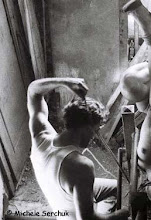When speaking of BDSM I am always referring exclusively to consensual activity. As in any economic activity, if two parties understand and agree to the terms of a transaction, the transaction is legitimate and its tenor is positive. If one party does not agree or breaks with the terms of the transaction, consent no longer obtains and the tenor is negative. Non-consensual activities are not properly to be referred to as BDSM in my book.
Since I consider BDSM definitionally positive, (somewhat boring, I realize, as a response to your question), I'll tell you something about what I think BDSM offers its practitioners. I believe the extensional world (i.e., the one available to our senses) to be but a small portion of what ultimately is. Proceeding from Heisenberg and Bohm in physics, Plato, Santayana and Nietzsche in philosophy, and Eliade and Campbell in the study of mystical traditions, there is always much around me to recommend the view that the varieties of human experience are practically unlimited, and that inquiry into the contemplative splendors of what lies beyond this realm is not merely edifying, but perhaps even ennobling regardless of outcomes - actually, the outcome of life is death, so in the end we all come to wisdom, don't we?
I enclose an excerpt from a presentation I gave to a lifestyle group not too long ago on shibari (Japanese-style bondage) and the link through BDSM to ultimate principles:
The idea of the monad, or the unbroken continuity between apparently discrete phenomena is axiomatic to Buddhist thought since at least the time of Bodhidharma (about 500AD), and is well developed in other eastern traditions. Consider the Hindu idea of the veil of Maya, before which we labor with the problem of duality. Behind the veil, there is no separation and what we think is duality is revealed to be an illusion. Whereas the separation from ultimate principles is believed to be a fact in western ontologies, eastern disciplines stress only the illusion of separation overlaying the fact of unity. To the eastern mind, the same energy flows through all apparently individuated things, as, for example, revealed in the meridian systems of oriental medicine or the patterns of Shinto Kagura dance. Open, boxy, and irregular shibari architecture plays with this assumed inter-penetration of energies across dimensions, crossing and rearranging conventional human postures and affording the possibility of a look into ultimate principles. That it becomes in the making highly erotic only compounds its force and potentials while syncretizing it with the mandates of biology. The classic M-jo character in Japan thus goes relatively willingly into her restraint and, while not necessarily embracing her suffering, accepts it as consistent with the pain of illusion such as we know on this side of the veil. Although Zen does not allow much about the antecedent Hindu concept of Maya, it does (through the Chinese Buddist Wu) specify Satori as the endpoint of suffering wherein the truth of unity is made manifest to the spirit.
Of course, all of this is available to the western bondage practitioner too, and it could easily be said that the rope top is performing a kind of priestly function in either case. The overwhelming emphasis on resistance to being restrained in the popular conception of bondage in the west, as opposed to ready yielding characterizing the eastern conception, is, I think, consistent with much larger mytho-poetic, and hence social constructs inhering in both. It may be difficult to describe what the salient differences are between eastern and western traditions in bondage (I mean, hands get tied behind the back in both cases), but it becomes easier when we couch our interest more broadly in the two worldviews.





















No comments:
Post a Comment